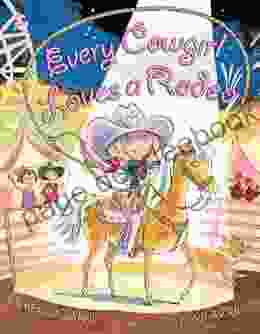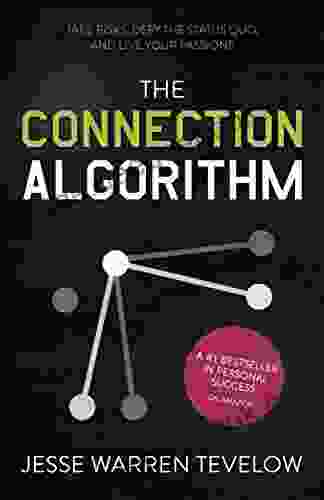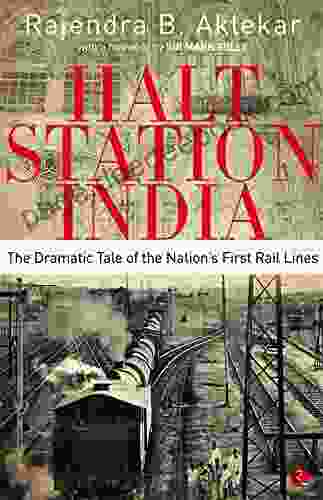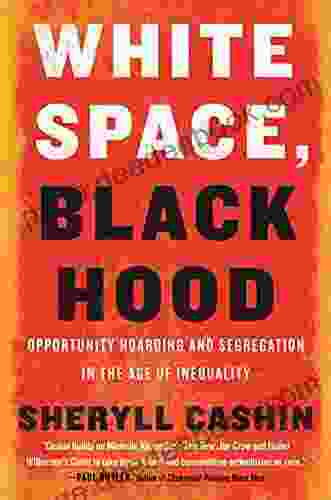The Dramatic Tale of the Nation's First Rail Lines

4.7 out of 5
| Language | : | English |
| File size | : | 9186 KB |
| Text-to-Speech | : | Enabled |
| Enhanced typesetting | : | Enabled |
| Print length | : | 234 pages |
| Screen Reader | : | Supported |
The construction of the first rail lines in the United States was a major undertaking that transformed the nation's transportation system and played a key role in its economic development. Prior to the advent of railroads, goods and people were transported by horse-drawn wagons or by boat. These methods were slow, expensive, and unreliable, especially over long distances.
The first successful steam locomotive in the United States was built by George Stephenson in 1825. The locomotive, named the "Rocket," was able to pull a train of cars at a speed of 28 miles per hour. This was a major breakthrough, and it soon became clear that railroads had the potential to revolutionize transportation.
The first railroad in the United States was the Baltimore and Ohio Railroad, which opened in 1830. This railroad ran from Baltimore, Maryland, to Ellicott's Mills, Maryland, a distance of 13 miles. The railroad was an immediate success, and it soon became a model for other railroads that were built throughout the country.
The construction of railroads in the United States was a difficult and dangerous undertaking. The tracks had to be laid over rough terrain, and bridges and tunnels had to be built. Many workers were killed or injured during the construction process.
Despite the challenges, the construction of railroads continued at a rapid pace. By the end of the 1850s, there were over 30,000 miles of track in the United States. This network of railroads connected major cities and towns, and it made it possible to transport goods and people more quickly and efficiently than ever before.
The construction of railroads had a profound impact on the economic development of the United States. Railroads made it possible to transport raw materials and finished goods to and from factories and markets. This led to a boom in manufacturing and trade. Railroads also made it possible to transport people to new settlements in the West, which helped to populate the country.
The construction of railroads also had a significant impact on the social and cultural development of the United States. Railroads made it possible for people to travel more easily, which led to an increase in tourism and cultural exchange. Railroads also helped to connect different regions of the country, which led to a greater sense of national unity.
The construction of the first rail lines in the United States was a major undertaking that transformed the nation's transportation system and played a key role in its economic development. Railroads made it possible to transport goods and people more quickly and efficiently than ever before, and they helped to connect different regions of the country.
The Baltimore and Ohio Railroad
The Baltimore and Ohio Railroad (B&O) was the first railroad in the United States. It was chartered in 1827 and opened in 1830. The B&O ran from Baltimore, Maryland, to Ellicott's Mills, Maryland, a distance of 13 miles.
The construction of the B&O was a major undertaking. The tracks had to be laid over rough terrain, and bridges and tunnels had to be built. Many workers were killed or injured during the construction process.
Despite the challenges, the B&O was an immediate success. It soon became a model for other railroads that were built throughout the country.
The B&O played a key role in the economic development of the United States. It made it possible to transport raw materials and finished goods to and from factories and markets. This led to a boom in manufacturing and trade.
The B&O also made it possible to transport people to new settlements in the West, which helped to populate the country.
The Transcontinental Railroad
The Transcontinental Railroad was a railroad line that connected the eastern United States with the western United States. It was completed in 1869 and was a major achievement in American engineering.
The construction of the Transcontinental Railroad was a difficult and dangerous undertaking. The tracks had to be laid over rough terrain, and bridges and tunnels had to be built. Many workers were killed or injured during the construction process.
Despite the challenges, the Transcontinental Railroad was completed in 1869. The railroad connected the eastern United States with the western United States, and it made it possible to transport goods and people across the country more quickly and efficiently than ever before.
The Transcontinental Railroad had a profound impact on the economic development of the United States. It made it possible to transport raw materials and finished goods to and from factories and markets. This led to a boom in manufacturing and trade.
The Transcontinental Railroad also made it possible to transport people to new settlements in the West, which helped to populate the country.
The Impact of Railroads on the United States
The construction of railroads had a profound impact on the economic, social, and cultural development of the United States. Railroads made it possible to transport goods and people more quickly and efficiently than ever before, and they helped to connect different regions of the country.
Railroads played a key role in the economic development of the United States. They made it possible to transport raw materials and finished goods to and from factories and markets. This led to a boom in manufacturing and trade.
Railroads also made it possible to transport people to new settlements in the West, which helped to populate the country.
Railroads had a significant impact on the social and cultural development of the United States. Railroads made it possible for people to travel more easily, which led to an increase in tourism and cultural exchange. Railroads also helped to connect different regions of the country, which led to a greater sense of national unity.
The construction of the first rail lines in the United States was a major undertaking that transformed the nation's transportation system and played a key role in its economic development.
4.7 out of 5
| Language | : | English |
| File size | : | 9186 KB |
| Text-to-Speech | : | Enabled |
| Enhanced typesetting | : | Enabled |
| Print length | : | 234 pages |
| Screen Reader | : | Supported |
Do you want to contribute by writing guest posts on this blog?
Please contact us and send us a resume of previous articles that you have written.
 Book
Book Novel
Novel Page
Page Chapter
Chapter Paperback
Paperback E-book
E-book Newspaper
Newspaper Sentence
Sentence Bookmark
Bookmark Shelf
Shelf Bibliography
Bibliography Foreword
Foreword Annotation
Annotation Footnote
Footnote Scroll
Scroll Tome
Tome Bestseller
Bestseller Narrative
Narrative Biography
Biography Autobiography
Autobiography Reference
Reference Dictionary
Dictionary Thesaurus
Thesaurus Narrator
Narrator Catalog
Catalog Borrowing
Borrowing Stacks
Stacks Archives
Archives Periodicals
Periodicals Lending
Lending Reserve
Reserve Reading Room
Reading Room Rare Books
Rare Books Interlibrary
Interlibrary Literacy
Literacy Study Group
Study Group Thesis
Thesis Dissertation
Dissertation Reading List
Reading List Theory
Theory Rupert Matthews
Rupert Matthews Robert Mccloskey
Robert Mccloskey Eileen Enwright Hodgetts
Eileen Enwright Hodgetts H E Edgmon
H E Edgmon David Jacobson
David Jacobson William K Kershner
William K Kershner Sam Sutherland
Sam Sutherland Brad Jones
Brad Jones Saffron A Kent
Saffron A Kent Josh Funk
Josh Funk Keith Snell
Keith Snell Johnny Nathan
Johnny Nathan Jeremy Waldron
Jeremy Waldron Maythee Rojas
Maythee Rojas Dewar Macleod
Dewar Macleod Edie Eckman
Edie Eckman Michael Bremer
Michael Bremer Trust Genics
Trust Genics Jamie L Carson
Jamie L Carson E C Land
E C Land
Light bulbAdvertise smarter! Our strategic ad space ensures maximum exposure. Reserve your spot today!
 Ernest ClineFollow ·2.5k
Ernest ClineFollow ·2.5k Isaac MitchellFollow ·12.1k
Isaac MitchellFollow ·12.1k Bernard PowellFollow ·8.7k
Bernard PowellFollow ·8.7k Chinua AchebeFollow ·8.3k
Chinua AchebeFollow ·8.3k Bryson HayesFollow ·5.9k
Bryson HayesFollow ·5.9k Andrew BellFollow ·18.1k
Andrew BellFollow ·18.1k Graham BlairFollow ·17.3k
Graham BlairFollow ·17.3k Cade SimmonsFollow ·2.5k
Cade SimmonsFollow ·2.5k

 Chandler Ward
Chandler WardEvery Cowgirl Loves Rodeo: A Western Adventure
Every Cowgirl...

 Dylan Mitchell
Dylan MitchellThe Connection Algorithm: Take Risks Defy The Status Quo...
In the tapestry of life, we are often...

 Terence Nelson
Terence NelsonThe Ultimate Guide to Building a Beloved Brand: Unlocking...
In today's fiercely competitive market,...

 Warren Bell
Warren BellGoverning Metropolitan Regions in the 21st Century:...
Metropolitan regions are home to a majority of...
4.7 out of 5
| Language | : | English |
| File size | : | 9186 KB |
| Text-to-Speech | : | Enabled |
| Enhanced typesetting | : | Enabled |
| Print length | : | 234 pages |
| Screen Reader | : | Supported |
















